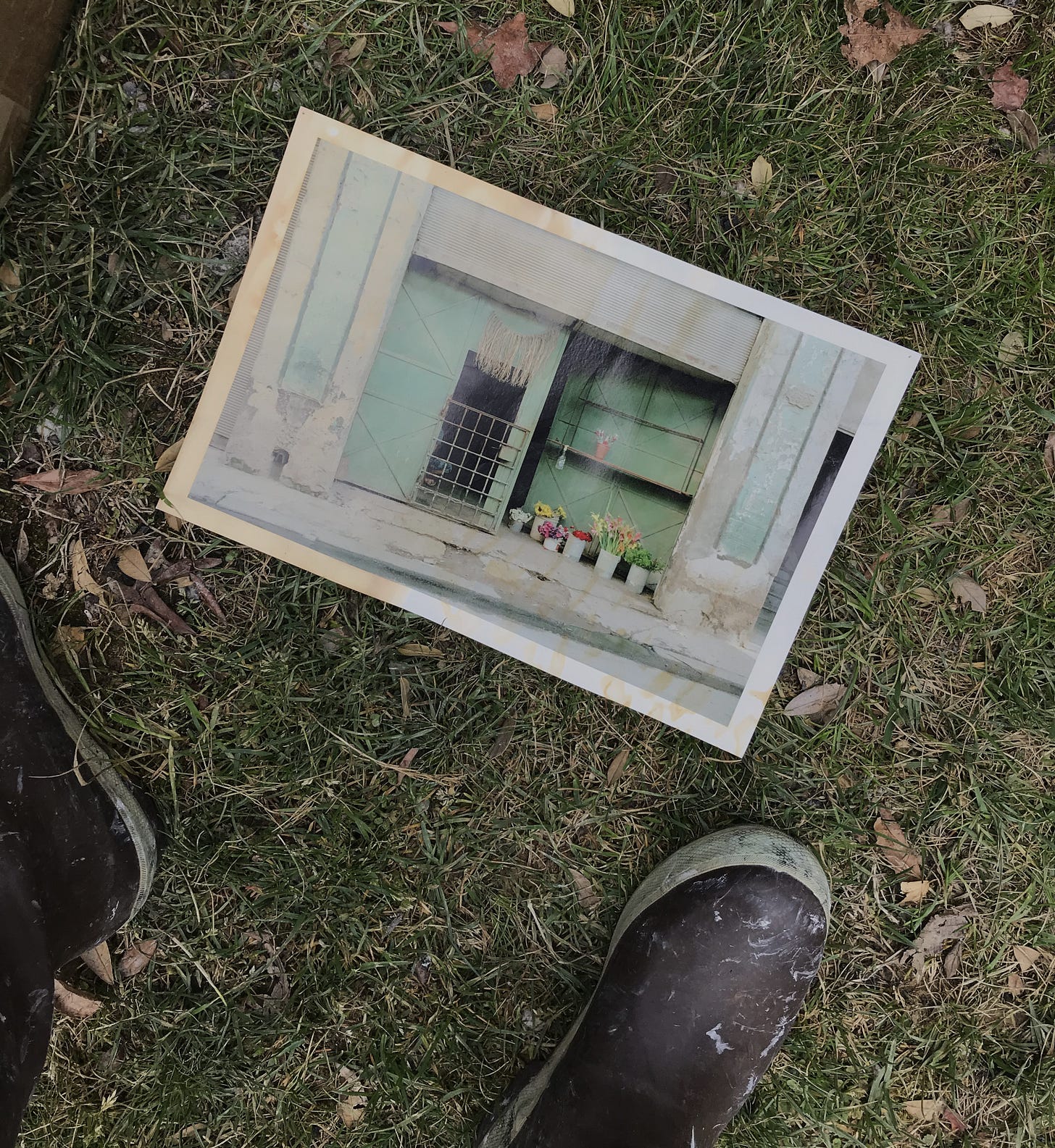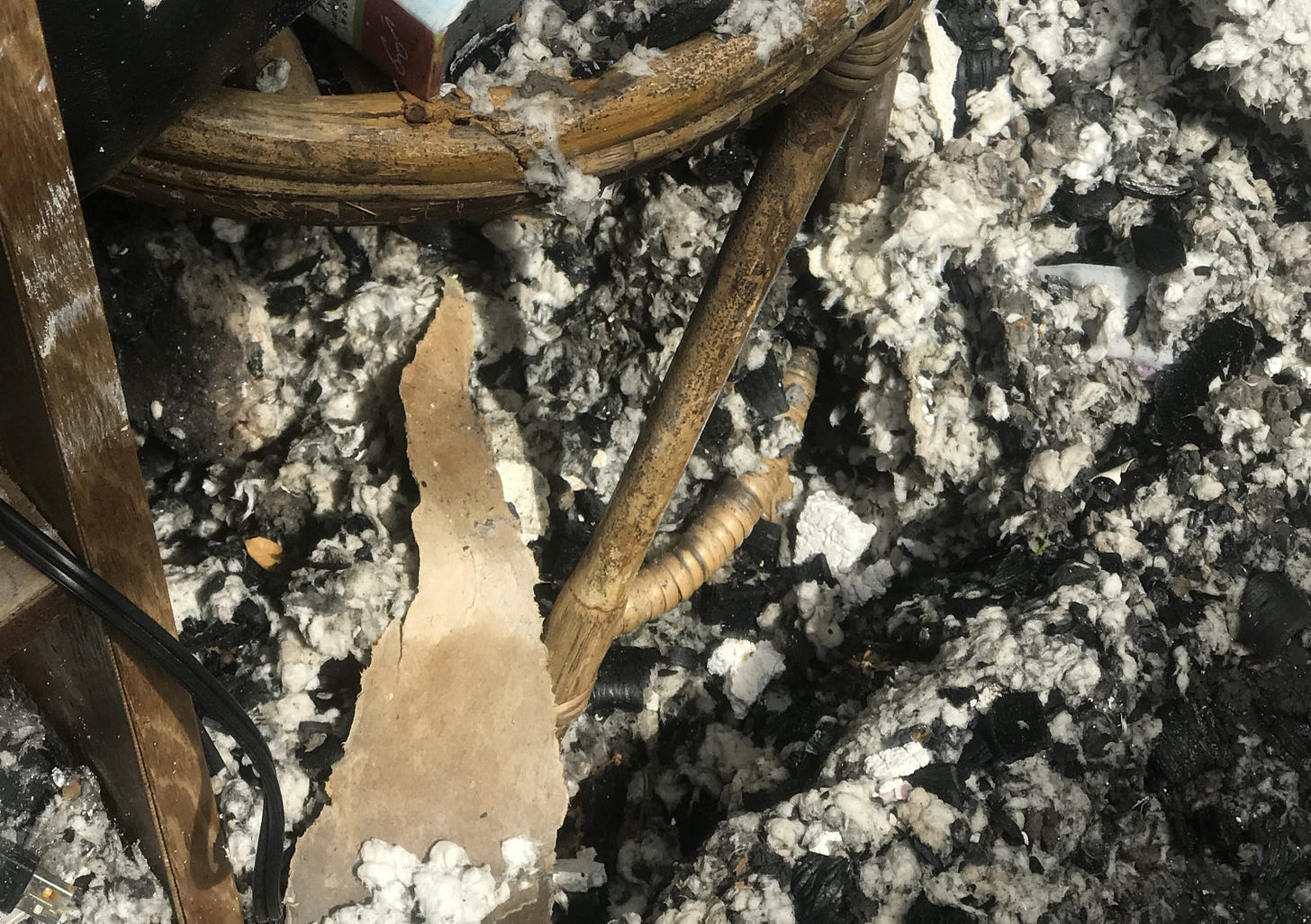Artifact, Part 1
MEMORY. It is this vital element that links flowers and story. What writer doesn’t lean on a memory when creating a narrative? And just about every customer I’ve waited on in a flower shop is either actively marking a moment in time they hope to look back on, or they’re marking a memory that’s already been imprinted on them.
Since my family home burned down, my parents and I have been tasked by the insurance company to remember. We have been painstakingly compiling an inventory of memories, listing out everything that was in our home so that we might be compensated accordingly. It’s been mind-numbing, time-consuming, and painful. Without looking, could you recall every pair of shoes, socks, pants, and every shirt in your closet? Every photo, book, or sentimental token on a windowsill, shelf, or lovingly packed away somewhere you thought was safe?
Each day my Mom and I talk about suddenly remembering something we’ve lost: an out-of-season garment buried deep in the closet we know we’ll miss when it gets cold, or something we took for granted, something we used so often we always expected it to be within reach. Its absence has become a kind of phantom limb pain. I feel the ache, reach for it, then remember it’s gone. For me, this has been my writing.
Early hand-written drafts. Journals. Iterations of poems and stories I saved in hopes of returning to down the road. Notes scribbled in the margins of my favorite books. Recent revisions, carving out the clarity of a character or landscape. The sudden, vibrant flurry of an exciting idea scrawled on the back of a receipt. Recalling all of it makes me feel materialistic or overly sentimental, but acknowledging it doesn’t lessen that phantom pain. I miss the stuff of life, the stuff of my life. And perhaps that is why when something is found in the rubble, the mix of relief and heartbreak is immense.
I am very grateful because I have salvaged a lot of my writing, including the draft of my novel that I’ve been working on for over a decade. Then other things surface. Friends have reached out offering copies of things I’d written that they still had, or I dig for something, whether figuratively by rewriting from memory or a literal unearthing.
Back in the spring, while venturing into the charred house, I went down into the basement to look for anything I could carry out. The basement was near total darkness and filled with a foot of water. The odor was…eerie. Some unpleasant chemical musk that was stranger—more alien—than it was offensive. I carefully waded through the dark water, tripping over an old piece of half-floating carpet and bins of Christmas ornaments. I pulled a few things out of the water, including a photograph my dear friend, Kasandra, had given me.

Kasandra and her husband, Stefan, had traveled to Cuba years ago where she took this photo. I love this photograph, in part because Kasandra took it and printed it for me, but also because it’s such a deceivingly simple and beautiful shot.
Compositionally, it is at once a floral design and a narrative. I remember first noting the green that infused everything. Serene yet mysterious. It gave me the same feeling that that strange yellow glow before a storm does: a kind of artistic aura.
The photo is a city street scene, nearly devoid of people. A set of industrial-looking garage doors sit on a crumbling curb. A smaller doorway gapes open and black, guarded by a metal gate. One garage door is ajar, and in front of it is a line of buckets, each filled with a different type of flower. I recognize the sunflowers and gladiolas right away, but the rest are too far away to discern.
The varying heights of the flowers and their bright colors offer our gaze to move across the photograph, balanced by the hanging length of string tassels. And in the darkened doorway, we catch a glimpse of a figure sitting cross-legged. The floral designer? Someone trying to unload these blooms before they’re too wilted? Or someone just looking for a place to rest out of the sun?
The hard, geometric shapes of the building and doors form a contrast to the buckets of flowers in front of them. They almost dwarf the flowers, but the brightly colored blooms peeking out of their dull buckets are strategic in their diminutive scale: they ask us to stop, lean in, and look closer—something that makes for a great work of art! In this way, the flowers break out of the grids formed by the doors, break out of the sense of static order, and they glow.
Emotionally, this photo is dreamy, even spiritual. So many doorways—thresholds—remind me of those in-between states, those liminal spaces. That groggy half-awake, half-asleep state right as dreams start to materialize. And with it comes that auspicious feeling so often tied to beginnings and endings. The doorways in this photo beckon us. They draw us in.
Whatever the subject, Kasandra’s photography is alluring in the same way a bloom invites us to take in its fragrance.
I laid the photograph (along with other artifacts pulled from the basement) out along the soft slop of the front yard. The green that glowed in the photograph was muddied by water damage, but seeing the photo moved me, it felt magnetic in its ability to draw me back into the memory of first receiving it from Kasandra.
I pulled my mask over my face and walked back into the house, gingerly taking the skeletal stairs up to my bedroom and workspace where I unearthed more.


